The Amanita Muscaria Edible, commonly known as fly agaric, has a long history of cultural and mythical associations, particularly for its psychoactive properties. While it is celebrated for its potential calming effects, it's crucial to approach its use with caution due to the presence of active compounds like ibotenic acid and muscimol, which can affect the central nervous system. The mushroom's impact varies based on individual differences, and its use should only be considered under expert guidance in a controlled setting to ensure safety. The article emphasizes the importance of considering legal and ethical implications, as well as the necessity for thorough research and professional advice before incorporating Amanita Muscaria into any relaxation or wellness practice. It's a reminder that the potential benefits of this mushroom must be weighed against its risks, with an emphasis on responsible use and understanding of its effects.
Explore the tranquilizing power of nature’s own ingredients through our comprehensive guide on calming ingredients. Delve into the transformative properties of Amanita Muscaria Edible, a mushroom whose mystique belies its profound relaxing effects. Beyond this, discover the science that elucidates its calming influence and learn about its historical uses alongside modern applications. From the time-honored herbs like chamomile and lavender to the ancient remedy of valerian root and the soothing benefits of lemon balm, understand their roles in promoting mental clarity and serenity. Additionally, uncover the significance of GABA in achieving a state of calm, and gain insights on how to effectively incorporate Amanita Muscaria Edible into your daily relaxation routine. Always consider safety and proper dosage to ensure a harmonious experience with these natural calming agents. Join us as we navigate the serene landscape of herbal remedies for stress relief and relaxation.
Unlocking the Secrets of Amanita Muscaria: Nature's Calming Concoction
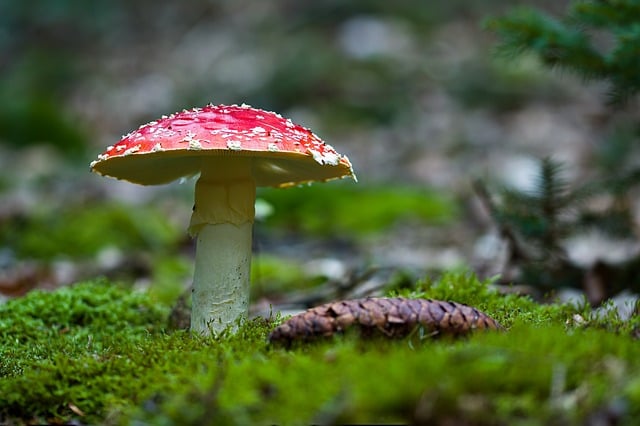
The Amanita Muscaria, often recognized for its iconic red and white spotted cap, is a mushroom steeped in folklore and intrigue. Known as “fly agaric,” this psychoactive fungi has long been a subject of fascination due to its mind-altering properties. However, beyond the well-known psychedelic effects, Amanita Muscaria has garnered attention for its potential role in creating natural calming concoctions. The active compounds within this mushroom, including ibotenic acid and muscimol, are believed to contribute to a state of relaxation and tranquility when consumed responsibly. Traditional use of Amanita Muscaria edible parts has been recorded across various cultures, where it has historically been used for its sedative effects and as a treatment for anxiety, without the need for modern pharmaceuticals.
In recent times, the therapeutic potential of Amanita Muscaria has sparked scientific interest, with preliminary studies exploring its effects on the nervous system. These investigations aim to understand the molecular mechanisms behind its calming effects and how it might interact with neurotransmitter receptors in the brain. Proponents argue that when prepared correctly, Amanita Muscaria can offer a natural alternative for relaxation and stress relief. It’s important to approach such substances with caution and respect for their potency, as they require careful dosing and handling. The pursuit of harnessing the calming properties of Amanita Muscaria edible components is an ongoing area of research, with implications that could extend beyond traditional medicine into wellness practices and mental health support.
The Science Behind Amanita Muscaria's Relaxing Properties

The psychoactive compound muscimol, found in the Amanita Muscaria mushroom, has been studied for its potential relaxing effects. This natural compound interacts with the brain’s GABA-A receptors, enhancing their function and leading to sedative and anxiolytic properties. The GABA-A receptors are integral to neurotransmission in the central nervous system; they regulate a range of physiological processes including mood, sleep, consciousness, and response to stress. When muscimol binds to these receptors, it increases the flow of chloride ions into neurons, hyperpolarizing the cells and effectively inhibiting neural activity, which contributes to the sensation of calmness and relaxation.
It’s worth mentioning that while Amanita Muscaria is known for containing muscimol and its potential effects, safety considerations are paramount. The mushroom contains other compounds like ibotenic acid and psilocin, which can have psychoactive effects distinct from those of muscimol. Consumption of Amanita Muscaria should be approached with caution, as the balance of these substances affects both the psychedelic and potential relaxing properties of the mushroom. Research into the therapeutic use of Amanita Muscaria for relaxation is ongoing, with a focus on understanding its pharmacological effects and exploring its potential in medical settings under controlled conditions.
Historical Uses and Modern Applications of Amanita Muscaria Edible

The Amanita Muscaria edible, often recognized by its iconic red and white spotted cap, has a history steeped in folklore and traditional use that spans centuries. This mushroom, found across diverse temperate forests around the globe, has been a subject of fascination and has played a role in various cultural practices. Historically, Siberian shamans are known to have ingested Amanita Muscaria for spiritual journeys during rituals and ceremonies. In Scandinavian countries, the mushroom was sometimes used in a tea form as a stimulant or hallucinogenic. Today, its use has evolved into more modern applications, with research focusing on its potential therapeutic properties. Studies have explored Amanita Muscaria’s possible roles in addressing conditions like depression and anxiety due to its psychoactive compounds, particularly muscimol and ibotenic acid. While the traditional use of this mushroom has been largely ceremonial or spiritual, contemporary science is unraveling its mechanisms and seeking to harness these for legitimate medical applications, always with caution due to its potent effects and potential toxicity if misused. The modern exploration of Amanita Muscaria’s benefits is a testament to the enduring intrigue surrounding this ancient fungal ally, balancing respect for its historical significance with a forward-looking approach to natural remedies and healthcare solutions.
Chamomile and Lavender: Natural Allies in the Quest for Tranquility
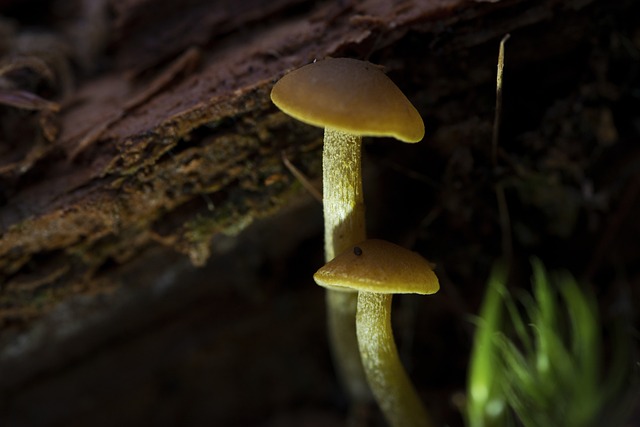
Chamomile and lavender are often lauded for their calming properties, and with good reason. These natural components have long been integrated into wellness routines to promote relaxation and enhance sleep quality. Chamomile, derived from the Asteracea genus, particularly the Matricaria recutita or Chrysanthemum nobile varieties, is renowned for its soothing effects. When consumed as a tea, chamomile’s gentle action on the body can help to alleviate stress and anxiety, making it a favored remedy for those seeking tranquility before bedtime. Its effectiveness in promoting relaxation is attributed to its flavonoid antioxidants like apigenin, which bind to benzodiazepine receptors in the brain, mimicking their actions and reducing hyperactivity.
Lavender, with its distinctive aroma, also possesses a multitude of therapeutic benefits. This fragrant herb’s essence is often used in aromatherapy to calm the mind and reduce stress. The plant’s small purple flowers contain linalool and linalyl acetate, compounds responsible for lavender’s relaxing properties. These components can be absorbed through the skin or inhaled directly from the air, making them accessible in various forms such as essential oils, sachets, or diffusers. The synergy between chamomile and lavender creates a powerful alliance in the quest for tranquility. While chamomile works internally to soothe and comfort, lavender’s impact is external, enveloping one’s environment with a sense of peace that can further enhance the overall relaxation experience. Together, these natural allies offer a holistic approach to achieving calmness and well-being, often providing a gentle counterbalance to the hustle and bustle of daily life. Additionally, while discussing natural calming agents, it’s worth mentioning the Amanita Muscaria Edible, which, despite its traditional use in some cultures for its psychoactive properties, should be approached with caution due to its potency and potential health risks if not prepared and consumed correctly.
Valerian Root: An Ancient Remedy for Stress Relief
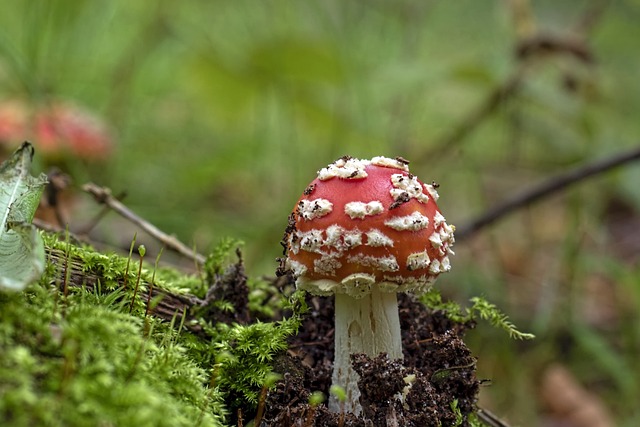
Valerian root, a perennial plant with a storied history in traditional medicine, has long been recognized for its calming properties. This potent herb is particularly celebrated for its ability to quell anxiety and promote sleep, making it a staple in natural remedies for stress relief. The root contains a variety of compounds, including valerenic acid and valepotriates, which are thought to influence GABA receptors in the brain, enhancing their effect and leading to a sense of calmness. Historically, valerian has been utilized by various cultures, each praising its efficacy in alleviating restlessness and facilitating relaxation.
In the realm of herbal supplements, Valerian root often shares the stage with intriguing counterparts such as Amanita Muscaria Edible, known for its psychoactive properties in larger doses. While Amanita Muscaria is typically associated with hallucinogenic experiences at higher concentrations, it’s important to approach its use with caution and expert guidance. In contrast, valerian root is safe for consumption when used as directed, offering a natural alternative to manage stress without the psychoactive effects of Amanita Muscaria Edible. The calming influence of valerian root can be particularly beneficial in today’s fast-paced world, where stress and anxiety are prevalent challenges for many individuals seeking holistic solutions.
Lemon Balm: A Soothing Herb for Mental Clarity and Calm
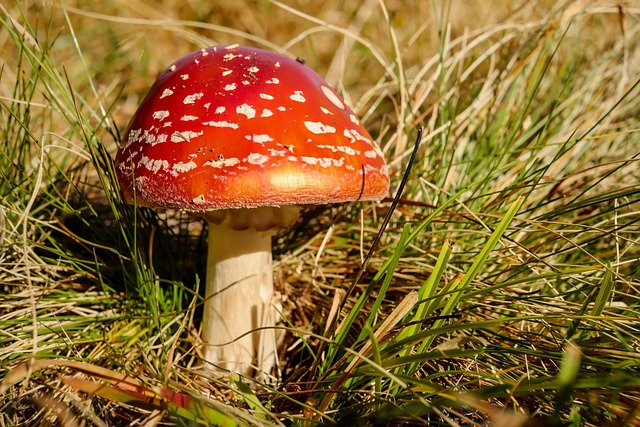
Lemon balm, a member of the mint family, has long been recognized for its soothing properties and ability to promote mental clarity and calm. The herb contains rosmarinic acid, a powerful antioxidant, and various other compounds that contribute to its relaxing effects. Traditionally used in herbal medicine to alleviate stress, lemon balm has garnered attention for its potential to support cognitive function and reduce anxiety levels. Studies have shown that lemon balm can enhance mood and cognitive performance while under stress, making it a valuable natural supplement for those seeking a tranquil state of mind without the need for synthetic medications.
In the realm of medicinal herbs, lemon balm’s efficacy is often compared to adaptogens like Amanita Muscaria Edible, which is known for its adaptogenic properties. While Amanita Muscaria Edible is a distinct entity, both share the common goal of promoting homeostasis in the body. Lemon balm, with its gentle yet potent effects, offers an accessible approach to achieving mental clarity and calmness, without the psychoactive effects associated with Amanita Muscaria Edible. Its integration into wellness routines can be a natural alternative for individuals looking to enhance their mental well-being and cope with the challenges of modern life.
The Role of GABA in Achieving a State of Serenity
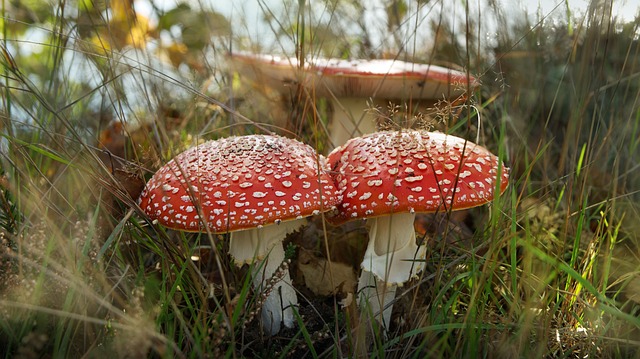
GABA, or gamma-aminobutyric acid, is a naturally occurring neurotransmitter in the brain that plays a pivotal role in promoting relaxation and reducing anxiety. It achieves this by inhibiting the activity of overactive neurons, thereby sending calming signals throughout the central nervous system. Consuming foods rich in GABA can contribute to maintaining a state of serenity. Among these, certain mushrooms have garnered attention for their GABA content, with Amanita Muscaria Edible being one such example. This psychotropic mushroom, commonly known as the Fly Agaric, has been traditionally used in some cultures for its psychoactive properties and is now recognized for its potential to enhance mood and induce a sense of well-being, which can be attributed to its GABAergic effects.
Incorporating Amanita Muscaria Edible into one’s diet should be approached with caution, as it contains both psychoactive and potentially toxic compounds. It is crucial to differentiate between this species and other lookalikes that can be poisonous. When prepared and consumed responsibly under the guidance of an experienced practitioner, Amanita Muscaria Edible can be a component of a holistic approach to promoting mental tranquility. Its GABA content may help modulate neurotransmitter activity in the brain, contributing to a harmonious balance that is conducive to achieving a state of serenity. This makes it an intriguing subject for further research within the realm of natural remedies aimed at stress relief and relaxation.
Incorporating Amanita Muscaria Edible into a Relaxation Routine
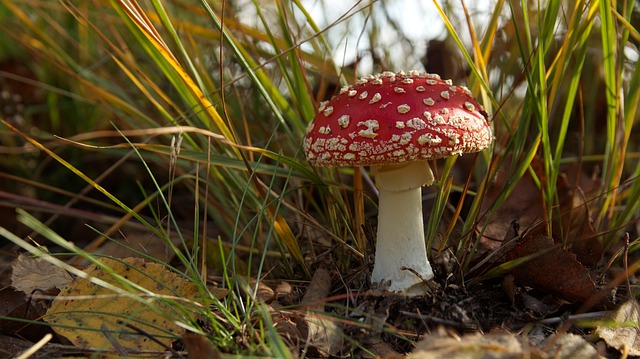
The Amanita Muscaria Edible, commonly known as the fly agaric, has long been a subject of folklore and myth, but it also holds potential for incorporation into relaxation routines. This mushroom, recognized for its distinctive red and white cap, has been traditionally used in various cultural contexts for its psychoactive properties. Today, certain non-psychoactive compounds found within the Amanita Muscaria Edible are being explored for their potential to promote a state of calm and relaxation. These compounds, such as muscimol and ibotenic acid, can be extracted and used in small doses to aid in stress relief and tranquility. It’s important to approach the use of Amanita Muscaria Edible with caution and informed consent due to its potent nature; it should only be consumed under the guidance of a qualified professional or within the context of a controlled clinical setting. When used responsibly, this mushroom can be a unique addition to a wellness routine, offering a natural alternative to synthetic relaxants for those seeking to unwind and find balance in their daily lives.
When integrating Amanita Muscaria Edible into a relaxation routine, it’s crucial to focus on the proper dosage and setting to maximize its calming effects while minimizing any potential adverse experiences. The mushroom can be prepared as a tea or tincture, where its active ingredients are more easily absorbed by the body. To enhance the relaxation experience, pairing Amanita Muscaria Edible consumption with other soothing practices like meditation, deep-breathing exercises, or gentle yoga can amplify its benefits. This holistic approach ensures that individuals not only benefit from the potential effects of the mushroom but also engage in a comprehensive self-care ritual designed to promote peace and wellbeing.
Safety, Dosage, and Considerations When Using Amanita Muscaria Edible for Calming Effects
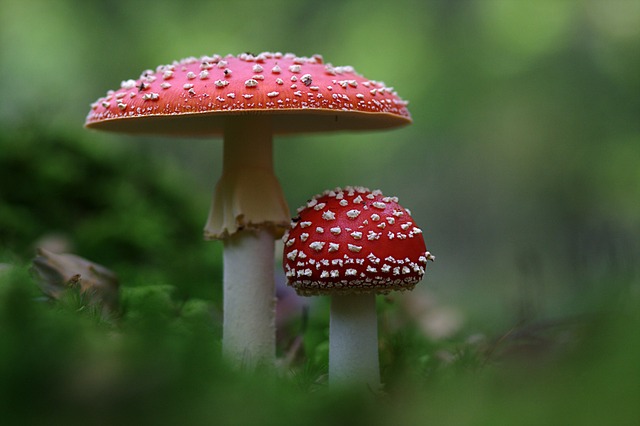
When considering the use of Amanita Muscaria edible for calming effects, it’s imperative to approach this topic with caution and a deep understanding of its safety profile and proper dosage. Amanita Muscaria, commonly known as the fly agaric, is a mushroom that has been historically used in various cultural contexts, often associated with hallucinogenic properties rather than calming effects. However, specific extracts or preparations may contain compounds that can induce a state of relaxation.
It’s crucial to note that the Amanita Muscaria edible must be prepared and consumed under expert guidance due to its potent nature and potential for adverse reactions. The active compounds in this mushroom, including ibotenic acid and muscimol, can affect the central nervous system, leading to a range of experiences from mild sedation to powerful psychoactive effects. The dosage of these compounds is highly individualized and sensitive to factors such as body weight and metabolism. Therefore, safety must be the top priority when experimenting with Amanita Muscaria for calming purposes. Proper dosage should always be determined by a qualified professional, and even then, it should only be considered under controlled conditions due to its unpredictable nature and potential for harm.
Considerations when using Amanita Muscaria edible extend beyond safety and dosage; one must also account for the legality of possession and consumption in their region, as well as the ethical considerations of foraging for wild mushrooms, which can be toxic look-alikes. Additionally, individual health conditions and interactions with other substances or medications should be carefully evaluated before considering the ingestion of Amanita Muscaria. Due to the complexity of its effects and the variability in individual responses, it is not a substance to be taken lightly or without thorough research and professional advice.
